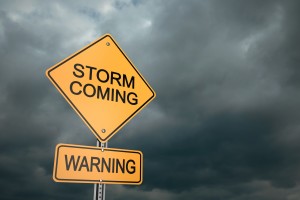Widgetized Section
Go to Admin » Appearance » Widgets » and move Gabfire Widget: Social into that MastheadOverlay zone
Harvey and Irma: FEMA and The Need to Re-Evaluate America’s Emergency Management Network In The Age Of Climate Change
The views expressed are those of the author and do not necessarily reflect the views of ASPA as an organization.
By Andrew Vaz
September 15, 2017
It’s 2017 and I believe it is time to rethink our nations’ emergency response apparatus!
If you live in my neck-of-the-woods, the talk is about a named storm with four letters = “Irma.” Yes, Florida was in the sights of a strong category five hurricane which has already left devastation in the Caribbean. Already, the United States has wildfires destroying forests in the pacific northwest; Hurricane Harvey, a category three storm, pounded the Texas gulf coast leaving the city of Houston under water; and now, Florida and much of the southeast is now in the crosshairs of Irma. And all the while our emergency response professionals from local, state and federal agencies are working around the clock to evacuate citizens, open up shelters and protect communities while allocating money from each government’s purse. The Federal Emergency Management Agency (FEMA) heads up the emergency response efforts and while their workers are willing to risk their lives in these disasters, the agency is poorly equipped and as of now stretched too thin. The U.S. will eventually become unable to provide an adequate emergency response to its citizens and it’s about time to address this matter.
Let’s get one thing straight: FEMA is not primarily an emergency response agency! FEMA is also proactive in the mitigation of emergency plans for many communities across the country. FEMA is primarily responsible for the execution of the National Response Framework that consists of public-private partnerships (PPP), working together instead of the just the government. However, it is my view that while these partnerships are helpful in many different communities, it is unfortunately not enough and a more elaborate framework must be developed.
Changing the Emergency Response Framework
We must become proactive — especially with climate change. The intensity of these storms are only getting worse. In recent years, federal, state and local governments have faced unprecedented costs for disaster response and recovery. The federal government obligated nearly $300 billion across numerous departments and agencies during fiscal years 2005 through 2014 for disaster assistance. Extreme disasters like Hurricanes Katrina and Sandy caused billions of dollars in damage. The rise in number and increase in severity of disasters is a key source of federal fiscal exposure.
It is safe to assume the number of disasters (and its severity) will continue to increase over the next few years, thus there needs to be a legislative initiative in place to pull in more money to make sure there is enough money to spend in disaster zones. This can be achieved through the same public-private partnerships in place, however, we need to advance innovation which comes in the form of research. Governments should develop scholarships and grants for students in emergency management or public administration to develop new emergency response ideas and initiatives.
Re-align the Emergency Alert System (EAS)
One if the biggest issues that exist in the emergency response network is the poor timing of the statewide Emergency Alert System (EAS). During Irma, the system was activated minutes after a Tornado Warning was issued by the National Weather Service (NWS). The problem with this is that the Tornadoes citizens were being warned about were already concluded in the warned areas. EAS has to work more effectively and that requires a more rapid response to emergencies, perhaps a shorter window for response.
The Assembly of a law enforcement emergency response unit
I know we live in a hyper-militarized country, where we have dozens of law  enforcement agencies, but there is a need to centralize emergency personnel into one LEO agency to be active at all times during a crisis. We should devise a program which consolidates the best officers for emergency response and management into one agency that would be responsible for emergencies across the state. This agency will work under the guidance of FEMA and state’s emergency management coordinator but will have more authority than the state and local law enforcement agencies.
enforcement agencies, but there is a need to centralize emergency personnel into one LEO agency to be active at all times during a crisis. We should devise a program which consolidates the best officers for emergency response and management into one agency that would be responsible for emergencies across the state. This agency will work under the guidance of FEMA and state’s emergency management coordinator but will have more authority than the state and local law enforcement agencies.
While Congress should continue to consider changes to the program addressing the competing goals of solvency and affordability, action such as improving financial controls and the accuracy of full-risk premium rates, overseeing private insurers and contractors and better managing personnel are all potential strategies that this agency can oversee.
Conclusion
We must always remember that although FEMA has federal responsibility for disaster management, it operates across a range of federal, state, local and nongovernmental entities that have specific authorities, resources, expertise and interests. More needs to be done to improve our disaster management apparatus or else will not be well equipped to deal with the ongoing threat of climate change and the increased severity of our common storms.
Author: Andrew R Vaz, M.Sc., M.P.A. is a doctoral student in the public policy and administration program at Walden University. He is a graduate of the Master of Science in Criminal Justice and Master of Public Administration double master’s program at Florida International University. He can be reached at [email protected].



 (5 votes, average: 3.60 out of 5)
(5 votes, average: 3.60 out of 5)
Follow Us!